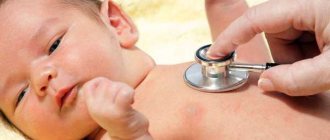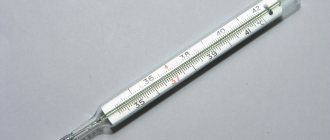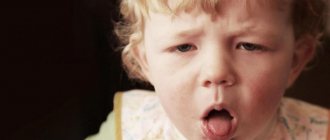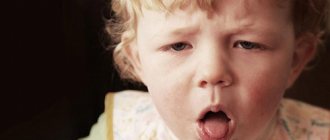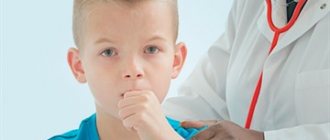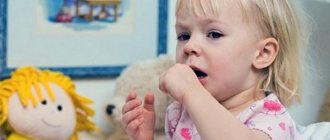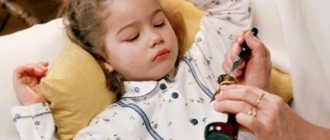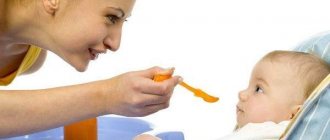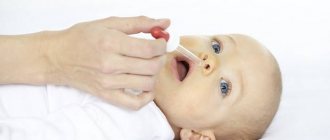Home Children Health
Are there people on Earth who have never suffered from a cough or runny nose? Statistics show that every person gets sick 2-3 times a year, and in children, colds are a frequent visitor. If you enjoy ice cream in the summer, breathe in the winter air, and catch a virus, a child can catch the disease at any time of the year.
Resistance to diseases and the state of immunity do not depend on age or season. There is a certain algorithm of actions that should be taken when a runny nose and cough are detected in a child. A timely reaction will help avoid severe consequences and long-term treatment.
Finding the cause of a child's condition without medical education is difficult, but possible. Parents sometimes do not see the difference between influenza and ARVI, let alone more severe diseases. Cough with runny nose is a strange symptom and can be caused by different sources.
A runny nose and cough are often accompanied by general malaise: weakness, headache. Should we immediately sound the alarm and rush to the doctor, or should we get by with quick treatment at home? Let's figure it out.
First, let's determine the source of the cough and runny nose.
ARVI ranks first among provocateurs. This is a group of diseases with similar symptoms. It spreads through airborne droplets and affects children's respiratory organs. Finding exactly the virus that caused the illness is problematic; there are more than 200 of them.
Other symptoms of ARVI besides cough and runny nose:
- sneezing;
- swelling of the mucous membranes;
- hard breath;
- muscle and headache;
- temperature;
- general weakness.
The flu adds severe headaches and a sore throat to the list. Rhinitis does not cause a high fever and does not put the child to bed, but it can be a signal for examination for measles and diphtheria. Laryngitis is characterized by a rough cough, hoarseness, the larynx becomes covered with crusts and mucus. Bronchitis provokes a deep, dry or wet cough.
Sore throat requires serious treatment; it can cause heart complications. It is identified by acute inflammation in the throat area - a white or gray coating. Pharyngitis, tracheitis, bronchiolitis, sinusitis, sinusitis and, most importantly, pneumonia, also require medical supervision.
The next pests are bacteria. Tests show the presence of a bacterial infection; it is expressed by severe pain, green snot and sputum. But yellow-green snot indicates the release of dead immune cells. A runny nose and cough can be a reaction to pollen, pet dander, and other irritants. Signs of allergies include severe lacrimation, itching in the nose and eyes.
Causes of runny nose and cough in infants
Early childhood is the most difficult to diagnose. Common and pronounced symptoms in an adult can be signs of completely different diseases in children. So a cough and runny nose in a month-old baby can be both a symptom of an infectious disease and a reaction to a new toy or bedding.
The main causes of a runny nose and cough without fever in an infant are as follows:
- Allergic reaction to the environment. This is the most common reason, since the unformed mucous membranes of the baby react sharply to any unfavorable factors. Strong smells, too dry or stale air, cigarette smoke can cause coughing.
- Entry of foreign elements into the nasopharynx. In this case, coughing is the body’s natural way of getting rid of the foreign body.
- Teething. Snot and cough in a 6-month-old child are quite likely signs of the appearance of the first teeth. This reason will be supported by the presence of abundant salivation.
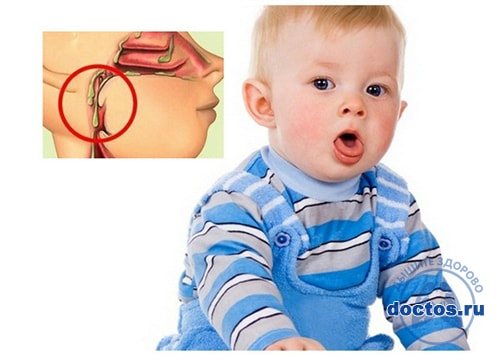
In these cases, cough and runny nose in a baby of the first year of life do not entail any serious complications. When aggressive elements are removed from the baby's environment, these symptoms disappear. You can alleviate the baby’s condition when teeth appear using symptomatic means.
However, a cough and runny nose against a background of fever, chills and general malaise are a reason to urgently consult a doctor. In these cases, cough may be a side sign of a serious infectious disease.
Diseases that can cause snot and cough in an infant are the following:
- Laryngitis, pharyngitis. With inflammation of the upper respiratory tract, for which these diseases are “famous,” the child begins to breathe frequently and intermittently, and the cough may be hoarse and whistling. Also, with inflammation of the upper part of the nasopharynx, a so-called “barking” cough with a runny nose is characteristic.
- Bronchial symptoms are said to be passivity, lethargy, coughing attacks in the morning and at night.
- Diphtheria, whooping cough. These diseases are characterized by progression in coughing attacks; the temperature rises only a few days after the first “bells” appear in the form of a runny nose and cough.
- acute respiratory infections and acute respiratory viral infections. Excessive snot, nasal congestion and a wet cough indicate that the baby has a cold.
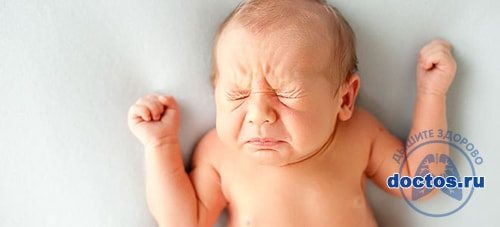
IMPORTANT! The fragile structure of the nasopharynx and mucous tract of the infant makes even a common cold dangerous. The occurrence of suspicious symptoms in addition to cough and runny nose is a reason to urgently consult a doctor.
General rules for treating a child for cough and runny nose
If a child is sick for the first 3 days and no serious symptoms are detected, we will help him cope with his illness in simple ways. This is enough to overcome a common ARVI and prevent complications from a more serious illness.
We organize suitable conditions for the child:
- The optimal air temperature in the room is 18-22 degrees.
- We regularly ventilate the room.
- We do wet cleaning 2-3 times a day. We remember that viruses and bacteria like to live in dust.
- We humidify the air the child inhales with a humidifier or a simple wet towel on a radiator.
- We do not force the child to eat, but we insist on drinking plenty of any liquids: tea, fruit drinks, mineral water, compotes.
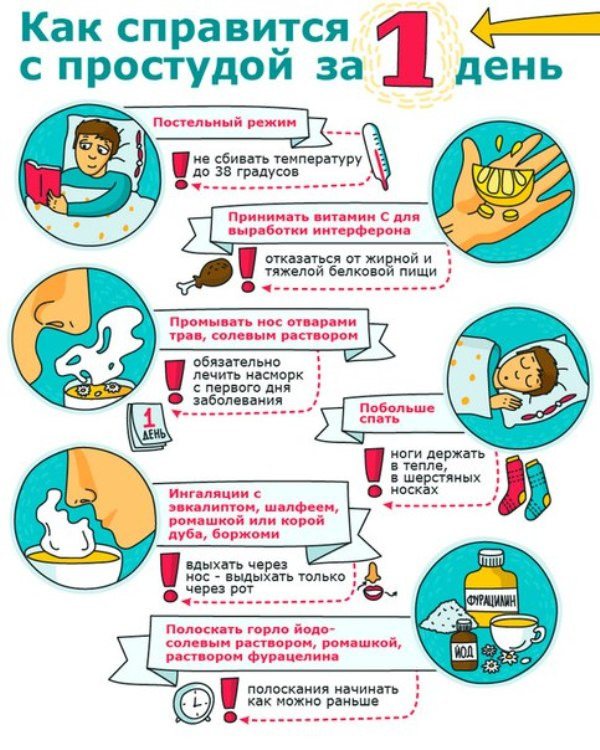
If the child feels well, we go for walks more often. We try to prevent the mucus in the nose from drying out and crusts from forming. The ideal assistant for this is a weak salt solution, which can be purchased at a pharmacy (saline) or made independently (1 teaspoon of salt per liter of water). It is absolutely harmless, it is permissible to drop 2-4 drops into each nasal passage at least an hour later.
It is appropriate to add an oil solution to the salt solution - Vaseline, olive oil, tocopherol, retinol or “Ectericide”. It will coat the mucous membranes and prevent drying. The oily liquid must be combined with hydrochloric liquid; the former can be dripped less frequently - every 2 hours.
Do not use vasoconstrictor drops - Naphthyzin, Nazol - to get rid of a common viral runny nose. They first alleviate the condition, and then worsen it, dry out the mucous membranes and cause complications in the medical history. They are appropriate for allergic rhinitis and otitis media.
Get tested for allergies. If a child’s rhinitis is caused precisely by external irritants, remove the source, start taking antihistamines and vasoconstrictor drops. The correct therapy should be prescribed by a pediatrician. Drops should not be used more than 3 times a day or longer than a week.
Let’s summarize the entire comprehensive approach to combating the runny nose:
- Drink plenty of any liquids that the child does not refuse - water, tea, compote, diluted juices.
- Give your son or daughter vitamins. In some cases, it is permissible to use antiviral drugs that stimulate the production of interferon and help fight viruses.
- Create all the conditions for recovery, let the child breathe clean and cool air.
- Moisten the nasal passages with a saline and oil solution, clear them of mucus.
- Apply an aroma lamp with esters - clove, eucalyptus, cinnamon, mint oil, diluted in a base of apricot, peach or jojoba oil. You can anoint the wings of the nose and the bridge of the nose with the mixture if the baby does not resist. An old proven method is the “Star” balm.
The mucous discharge from the nose should flow. Use an aspirator (nozzle suction device) or cotton swabs if you have a baby. It’s better to have irritation from a handkerchief under the nose than for a child to need long-term treatment in a hospital setting. If you follow these simple recommendations, a runny nose and cough (as a result of snot) will go away on their own in just 3 days.
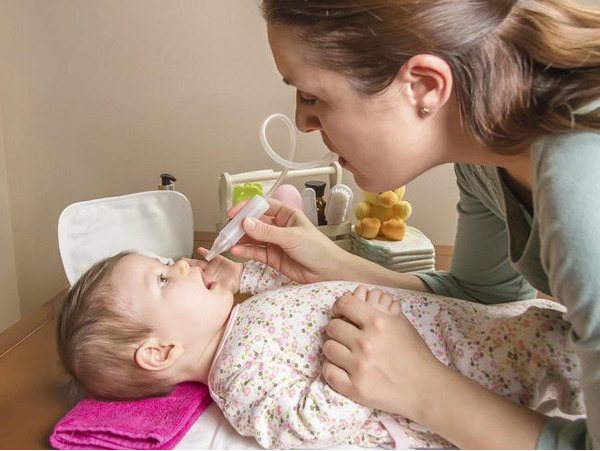
How to deal with a runny nose?
Most pediatricians do not recommend using medications to treat a runny nose in infants unless it is accompanied by a high fever. To moisturize the mucous membranes of the nose, facilitate the outflow of mucus and increase local immunity, it is necessary to rinse the nose with an isotonic solution of sea water, which can be bought at a pharmacy. From birth you can use the following ready-made products:
- "Aqualor";
- "Salin";
- "Afrin";
- "Aquamaris";
- "Morenasal."
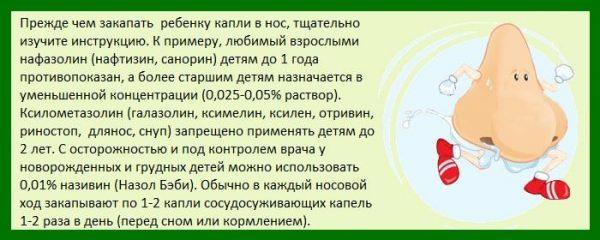
Cold drops for children
These drugs are available in several dosage forms, so when purchasing, be sure to clarify that the product is being purchased for an infant. All solutions must be in the form of drops - the use of sprays before one year of age is prohibited due to the high risk of the medicine getting into the ear canals and the development of inflammatory processes in the middle ear.
Saline solutions can be replaced with saline solution (sodium chloride 9%). It is necessary to instill 3-4 drops into each nasal passage up to 4-6 times a day; during the procedure, the child’s head should be tilted to the side.
The use of vasoconstrictors (“ Vibrocil ”, “ Nazivin ”) in children under 1 year of age is possible only if there are strict indications. You cannot use medications in this group for more than three days in a row due to the risk of addiction and excessive drying of the nasal mucosa.
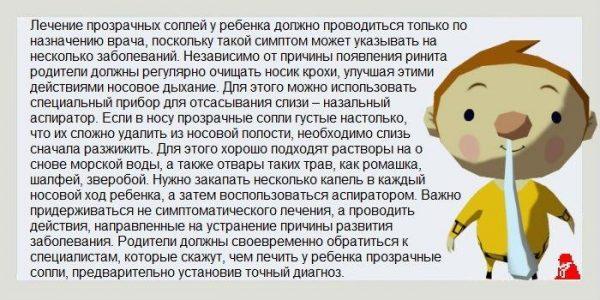
Treatment of clear snot in a child
Note! In some cases, the doctor may prescribe immunomodulatory and antiviral agents (“ Viferon ”, “ Gerpferon ”), which stimulate the production of one’s own interferon to fight viruses. Such a measure is considered justified only in relation to weak children susceptible to colds and infectious diseases. If a child was born at term with normal body weight, he does not require any stimulants.
Allergic runny nose
If the nasal discharge is caused by an allergy, it is necessary to give the child an antihistamine. These are medications that block the sensitivity of histamine receptors and the production of histamine, a substance that causes allergy symptoms. For infants, the drug of choice is usually the medicine " Fenistil " in the form of drops for internal use. The drug is suitable for use from one month of age, and the dosage depends on the age of the child. The recommended regimen for using Fenistil to relieve allergy symptoms in children of the first year of life is shown in the table.
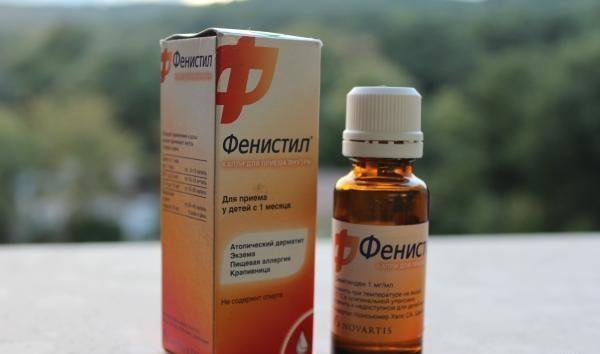
Fenistil in the form of drops
| Child's age | Single dosage | How many times a day should I give? |
| 1-3 months | 3 drops | 3 times a day |
| 3-6 months | 5 drops | 2-3 times a day |
| 6-12 months | 10 drops | 3 times a day |
Important! "Fenistil" is a symptomatic drug, that is, it only eliminates the signs and manifestations of an allergic reaction, but does not treat the disease itself. It is very difficult to treat allergies in infants due to the unstable functioning of the immune system, and this should be done by a qualified allergist-immunologist.
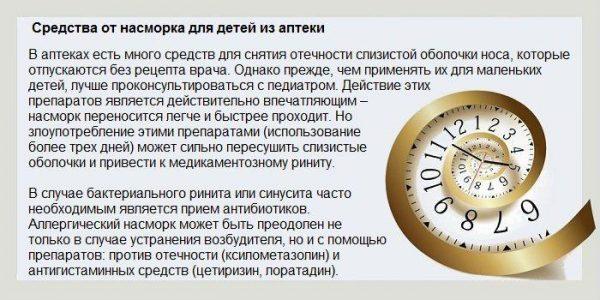
Cold remedies for children from the pharmacy
If your runny nose doesn’t go away, let’s tackle it thoroughly
What remedies will help get rid of a runny nose? You can drip breast milk into your baby's nose several times a day. Doctors deny the effectiveness of this method, but they have cured more than one generation. Try it, it definitely won't do any harm.
Older children are helped by drops from available products - onions, potatoes, vegetable oil, honey. Squeeze the juice from the vegetables, dilute it with honey and butter. You will need 1 tsp of ingredients, take a tablespoon of vegetable oil. This mixture should not be used if the child is allergic to honey. Check the reaction - drop a little honey on the inside of your forearm and wait half an hour. No redness - no allergies.
Another helper is Kalanchoe. The juice of the plant contains disinfectants and anti-inflammatory substances. It is better to dilute freshly squeezed liquid with boiled water in a 1:1 ratio so as not to damage the delicate mucous membrane of a child’s nose. From 7-8 years old you can drip pure juice.
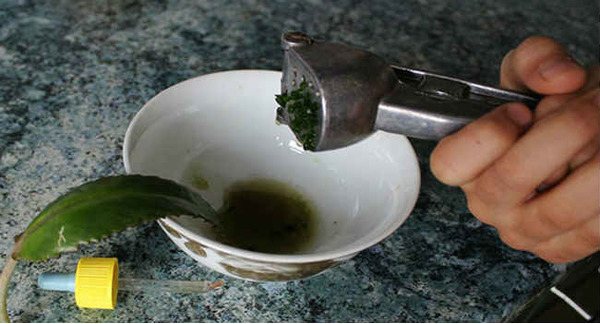
Cough - how to treat it
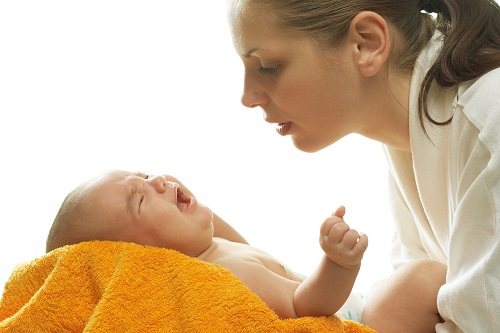
A runny nose can cause a child to cough. Excess mucus descends along the back wall of the nasopharynx, irritating its receptors. The accumulation of this mucus in the bronchi causes its rejection. All this is expressed in the form of coughing.
Difficulties in treatment are associated with age restrictions on taking medications. Expectorants based on acetylcysteine, ambroxol, carbocysteine are prohibited for children under 2 years of age. Plant-based cough syrups are indicated from 6 months. Their cautious use is possible only after consultation with a pediatrician. The dosage is selected by the doctor.
You can attach cold patches to your baby's clothes. The essential oils in their composition help the baby breathe. In any case, when a child with a cold coughs, give plenty of water, his room is ventilated and moistened.
Attention! If a child has a cough and runny nose, but no fever, this may be a manifestation of an allergy. Then the treatment will be different. Only the attending physician will help you understand the diagnosis.
Massage and gymnastics - we will help a child without drugs
Another way to alleviate a child’s condition is acupuncture massage of points on the face. How to do it? Using light, smooth massaging movements, move down from the bridge of the nose from the eyebrows along the wings to the base of the nose and massage the side surfaces of the tip a little more. We act symmetrically on both sides and clockwise.
Breathing exercises will also come in handy. There are different techniques, but even the simplest of them improve blood circulation in the nasopharynx and relieve swelling. It is enough to do breathing exercises 1-2 times a day. It will be an excellent addition to the main treatment.
When a runny nose requires emergency medical attention:
- If the snot does not go away for 10 days or more, you need a consultation and testing for the presence of a bacterial infection. In this case, the doctor will prescribe antibiotics.
- If a child complains of an unbearable headache or discomfort in the ears (for very young children, you can press the tragus to determine whether the ear hurts or not). Contact an ENT specialist to rule out the presence of sinusitis or otitis media. These symptoms may indicate inflammation of the meninges (meningitis).
- If you notice blood in the mucus secreted and it did not get there from the wounds around the nose, plus the child looks too lethargic - these signs indicate diphtheria.
Don't put antibiotics in your nose. They cause an allergic reaction in the body. Later, if antibiotic treatment is needed for a serious illness, they will be useless and sometimes dangerous. The popular “Dioxidin” is completely toxic to children.
Let's move on to coughing - how to get rid of it and is it always necessary to do this?
A cough is the same immune response as a runny nose. By coughing, the child tries to clear the airways of irritants. Most often, this same irritant is snot. And the first way to get rid of a cough is to cure a runny nose using the methods described above.
Any disease of the respiratory tract is accompanied by copious production of sputum. The body removes accumulated mucus by coughing. The parents’ task is not to dry out the mucus and to do everything so that it leaves the child’s body more easily. And the first remedies are plenty of fluids and cool air.
It is strictly forbidden to give a child cough suppressants without a doctor’s prescription.
Pay attention to accompanying symptoms:
- Fever. When a cough and runny nose is accompanied by a temperature no higher than 37.5 degrees, this indicates a cold and does not cause danger. If the thermometer strip runs above 38 degrees, the body is fighting a virus or bacterial infection. Remember that the optimal temperature for the death of viruses is 38-39 degrees; if it rises, you must take an antipyretic. Paracetamol will help check the severity of the disease: if it brings down the temperature, in most cases the disease is mild.
- Labored breathing. It occurs when there is a spasm of the natural air passages and indicates a serious disease of the bronchi, pneumonia.
- Hoarseness in the voice. A bad symptom that requires observation by a doctor. Appears with sore throat, laryngitis, pharyngitis.
If the sputum is very thick, transparent and viscous, you should think about an asthmatic cough. There is no temperature. If the cough is persistent, the sputum is dark and streaked with blood, you need to be examined for cancer.
How to treat viral and bacterial colds
A cold in a one-month-old baby can be viral or bacterial. The disease can be caused by different types of pathogens, so before you start treating it, you should consult your doctor. Therapeutic therapy must be carried out correctly, it is important not to harm the child’s body.
Antibiotics are recommended for use in the presence of a bacterial cold; these drugs do not affect viruses. If the cold is viral, then antiviral medications are prescribed. The doctor can prescribe suppositories, syrups, drops, tablets.
How to treat a cold in an infant if the disease is of viral origin? Usually in these cases, drugs containing interferon are prescribed. But they should be used in the presence of severe symptoms and conditions:
- elevated temperature, which reaches 39 degrees on thermometers;
- a state of chills and fever, provided that it lasts more than 3 days in the child;
- if the child gets sick again;
- habitual use of medications under the strict supervision of a pediatrician.
If the child does not have the above factors, then he should not be given antiviral drugs. It is better to let his body fight the disease on its own.
Folk cough remedies for children
Warm baths with a weak solution of mustard powder will also help eliminate coughing. After the bath, children's feet are rubbed with a warming fatty ointment, and after a couple of minutes socks are put on. You can fill the bathtub with hot water, add a pack of soda and/or salt, and let the child sit in the room and breathe in the steam.
The following recipes also give good results:
- Radish + honey: cut out the center of the vegetable, pour honey into it and leave for 24 hours.
- Onion juice + honey in equal proportions.
- Warm milk mixed with honey and a spoonful of mineral water.
- Half a kilo of walnuts + 300 g of honey + juice of four lemons + teaspoon of aloe juice.
The dosage for small children under 4-5 years old is a teaspoon, from 5 to 10 years old you can give a dessert spoon, from 10 years old - a tablespoon. You need to use the product 2-3 times a day. It is not advisable to treat a child under 3 years of age with folk remedies containing honey; they can cause an allergic reaction.
Time-tested compresses quickly treat a child’s cough:
- Warm boiled potatoes with a few drops of iodine and a spoonful of vegetable oil. The mixture is placed on parchment or plain paper, covered with foil or a bag. The place where the compress is applied is the chest and back. The duration of the procedure is until it cools down.
- A piece of wool soaked in salt water. The amount of salt is a tablespoon per shallow container of water. The compress is placed on the chest and back and left overnight.
- Grind a whole head of garlic with 100 grams of fat or oil. Apply the mixture to your child's feet before bedtime.
Any compress requires wrapping the child. Thermal effects on the chest and feet help to liquefy mucus and promote its rapid removal from the lungs.
You can also ease coughing with percussion massage. The child should be placed on his stomach and tapped on the back with fingers or the edge of the palm for 1-2 minutes. The actions should be strong enough, but do not hurt the baby. After the massage, return the patient to an upright position and ask him to cough. The procedure is carried out up to 5 times.
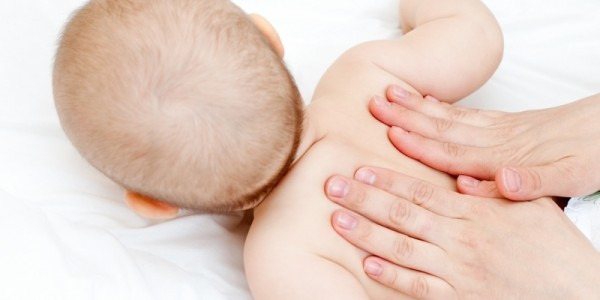
Do not warm up or massage at high temperatures.
Inhalations are a quick way to relieve a child from coughing
Modern parents are lucky: they have special devices for inhalation at their disposal - nebulizers and inhalers. They will also help cope with cough and runny nose.
The inhaler turns liquid into vapor containing large particles. Use it to moisten the upper respiratory tract and clear phlegm. For inhalation, you can use saline solution, mineral water, herbal decoctions, and oil solutions.
The nebulizer acts as an aerosol, therefore it is used for diseases of the lower respiratory tract. It's better not to use it yourself. The nebulizer is usually loaded with quite serious medications, which are purchased at the pharmacy with a doctor’s prescription.
If you don’t have a special device yet, you can do an old procedure - inhalation with potatoes. Make sure that the steam is not too hot and does not burn the child's airways. The benefits of any inhalation are obvious - they make sputum “wet” and help it leave the child’s body along with viruses and bacteria.
Carry out such procedures infrequently. If the child is small, his cough impulse is not yet fully formed and there is a risk of suffocation from the large amount of mucus secreted.
Features of the treatment of runny nose and cough in a newborn
Babies under one month old rarely get really sick. The newborn's immune system is so strong and reinforced by mother's milk that cold viruses are practically powerless. Therefore, in most cases, a baby’s cough without fever is just a reaction to a negative element or a physiological feature.
However, if a viral infection is suspected, the child will definitely need medical intervention and assistance. It is extremely difficult for parents to independently determine the causative agent of the infection, therefore going to a children's clinic is a mandatory element of treatment.
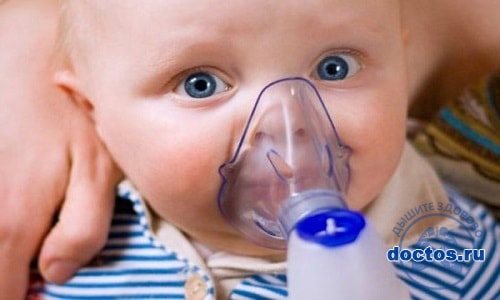
The main problem in treating a runny nose is the timely removal of excess mucus. Since a newborn baby is not able to blow his nose on his own, parents need to take on this function. The following will be of great help in this matter:
- Nebulizers. All kinds of inhalations for coughs and runny noses for infants are the most effective methods of treatment. Modern medical inhalers and nebulizers are specially designed taking into account the physiological characteristics of babies. Inhalation of herbal or medicinal solutions has a beneficial and safe effect on the well-being of newborns.
- Rubber bulb. These little enemas will quickly and effectively remove excess mucus from your baby's nose. Pears have a small nose that easily fits into the small nasal opening of a newborn.
- Cotton buds. Effective for removing denser, hardened secretions. Liquid snot cannot be removed using sticks.
If a baby has a cough and runny nose without fever, then there is no reason to worry. Copious nasal discharge is a protective reaction of the body, and coughing can be a consequence. Thus, a reflex cough due to snot in a baby quite often misleads parents, who mistake it for a separate symptom, and this is only a reaction to snot flowing into the larynx. In this case, eliminating the snot will lead to the disappearance of the cough.
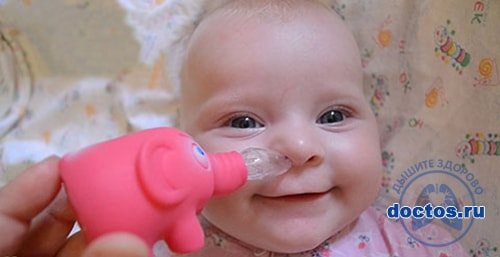
Parents only need to allow the child to freely cough up excess mucus and liquid.
IMPORTANT! Premature, weak babies may additionally be prescribed immunomodulatory agents and drugs.
Treatment of children's cough with medications
Herbal and synthetic mucolytics (“Pertussin”, “Lazolvan”, “Mukaltin”, “Ambroxol”), phlegm-thinning drugs, and syrups containing soda will help ease the child’s well-being with a common cold cough. These drugs provoke the production of sputum and improve its elimination. The composition of the medicines usually includes extracts from licorice root, coltsfoot, and plantain.
There is a second group of medications that block the cough reflex. They are prescribed for dry cough, which appears not only due to viral and bacterial infections, but also due to allergies or neurology. For children, such a drug must be selected by a doctor. It is important to use a mixture or tablets that do not contain harmful components and are not addictive.
Under no circumstances should you give your child drugs from both groups at the same time. By liquefying mucus and muffling the cough, you do not cure, but provoke complications.
We will do everything to prevent cough and runny nose.
The main preventive measure is strengthening the immune system. An immunogram will help you find out about specific problems in this area. But even without it, there is something to do: hardening, proper nutrition, regular and long walks in the fresh air, sufficient time for sleep and rest. If there is an allergy, analyze what the child reacts to with a runny nose and cough, remove the irritating factor.
The use of some traditional and official medicine will help to avoid the disease: wearing a gauze bandage during the period of virus activity, applying antiviral ointments to the nasal passages, inhaling essential oils.
Daily routine for a child with a cold
What lifestyle should you lead during illness? This question worries moms and dads first of all.
Dos and don’ts for a child with a cold:
- In the first place is the question of bathing the baby. You can and should bathe your baby if the body temperature does not exceed 38.5 degrees. You need to bathe in warm water, approximately corresponding to body temperature. Bathing will help reduce the temperature and improve the overall condition of the baby.
- Don't give up walking. Breathing improves in the fresh air and the body's defenses increase.
- Feeding should be frequent, small portions. With mother's milk, the baby will receive the necessary amount of fluid and protective antibodies.
- Long sleep helps restore strength.
- There is no need to dress your baby warmly and wrap him in blankets. This will make your body temperature even higher. All you need to do is wear a cotton shirt and rompers.
- During illness, it is important to create a calm and friendly environment around the baby. Limit him from noise and bright light, spend more time next to him, sing calm songs, read fairy tales.
Diseases are easier to prevent than to treat! From early childhood, engage in hardening and strengthen your immune system. Let viruses and bacteria bypass you.
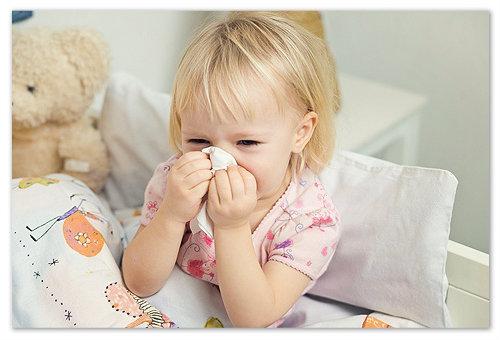
Treating the first signs of a cold in a child
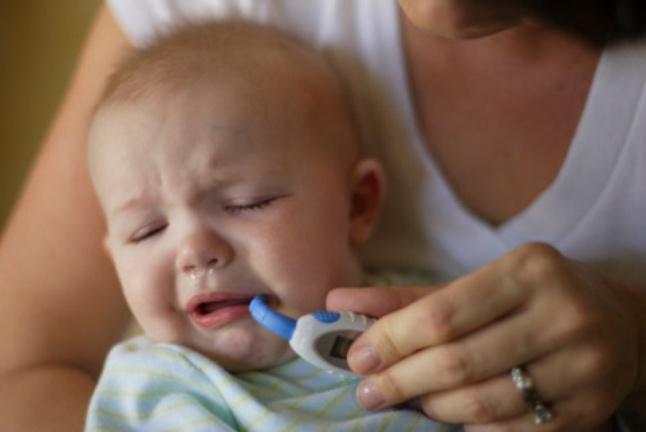
How to treat a runny nose in a five-month-old baby
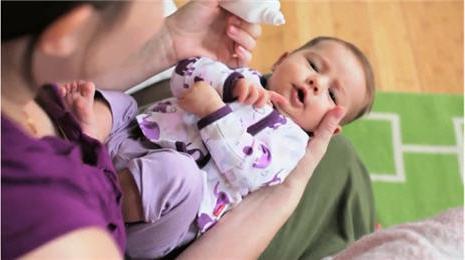
Safe treatment for a runny nose in a one-month-old baby
Source: rebenokrazvit.ru
